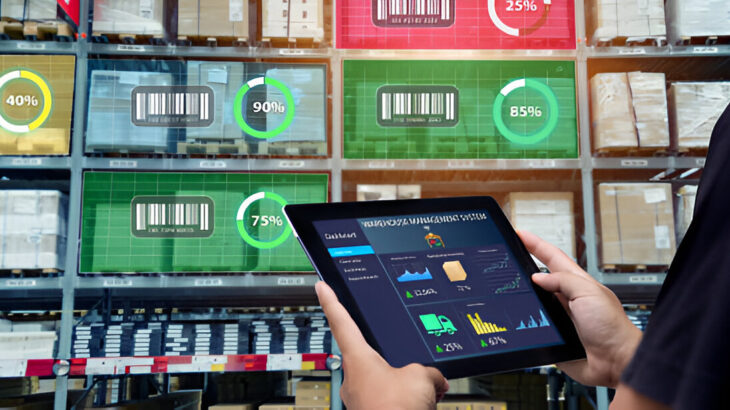How Labeling Improves Product is more than just about making things look good. It plays a critical role in ensuring safety and meeting regulations. A well-designed label helps customers use products safely and confidently while ensuring businesses follow the rules.
Whether it’s food, electronics, or pharmaceuticals, accurate labels provide essential information that protects consumers and keeps businesses compliant with industry standards. Let’s explore how labeling improves product safety and compliance.
1. Clear Usage Instructions
Labels provide clear instructions on how to use a product. Whether it’s a simple “Shake Well Before Use” or detailed steps for assembling furniture, instructions help customers use products safely.
For example, if a cleaning product requires dilution before use, the label ensures users follow the correct process. Clear instructions reduce accidents and protect users from harm.
2. Highlighting Safety Warnings
Labels are crucial for displaying safety warnings. Many products, like chemicals or medications, can be harmful if misused. Labels with warnings such as “Keep Out of Reach of Children” or “Flammable: Keep Away from Heat” help prevent accidents.
In some industries, warning symbols are used to grab attention quickly. A skull-and-crossbones symbol, for instance, signals toxicity. These visual cues make it easy for people to understand potential risks at a glance.
3. Providing Allergen and Ingredient Information
For food and cosmetic products, labels are essential for listing ingredients and allergens. This helps customers make informed choices and avoid harmful reactions.
For example, a food label that lists “Contains: Nuts” can help someone with a nut allergy stay safe. Similarly, cosmetic labels with “Paraben-Free” can guide customers with sensitive skin toward safer options.
4. Compliance with Regulations
Regulatory compliance is a big part of labeling. Governments and industry bodies set specific requirements for product labels to ensure consumer safety. For example:
- Food Products: Labels must show nutritional information, expiration dates, and storage instructions.
- Electronics: Devices often carry labels like “CE” or “UL” to indicate they meet safety standards.
- Pharmaceuticals: Medicine labels must include dosage, side effects, and active ingredients.
Failing to comply with these rules can lead to fines, product recalls, or even legal action. Labels help businesses avoid these risks while building trust with customers.
5. Traceability and Batch Information
Traceability is crucial for product recalls or quality issues. Labels with batch numbers, manufacturing dates, and barcodes make it easy to track and manage products.
For example, if a batch of canned goods is found to be contaminated, labels allow manufacturers to recall only the affected products instead of pulling everything off the shelves. This saves time, money, and ensures customer safety.
6. Preventing Counterfeiting
Counterfeit products are a major safety and compliance issue, especially in industries like pharmaceuticals and luxury goods. Labels with security features, such as holograms, QR codes, or tamper-evident seals, can help prevent counterfeiting.
Customers can scan QR codes to verify product authenticity, ensuring they are buying genuine and safe products. For businesses, this protects brand reputation and customer trust.
7. Language and Localization
Labels often need to include information in multiple languages, especially for products sold internationally. This ensures that all customers, no matter where they live, can understand how to use products safely.
Localization also involves adapting units of measurement, date formats, and regulatory symbols to meet the requirements of different regions. This not only ensures compliance but also makes products more accessible.
8. Promoting Responsible Use
Labels can encourage responsible use and disposal of products. For example:
- Recycling Labels: These inform consumers about how to dispose of packaging in an eco-friendly way.
- Dosage Guidelines: Medicine labels that include the correct dose prevent misuse or overdosing.
These instructions protect the environment and keep users safe.
9. Building Consumer Trust
When a label is clear, accurate, and informative, it builds trust. Customers feel confident using products that provide the information they need. Trust leads to customer loyalty and positive word-of-mouth.
For instance, a skincare brand that transparently lists ingredients earns the trust of health-conscious buyers. Trust is especially important for industries like food and medicine, where safety is a top priority.
Conclusion
Labels are more than just stickers; they are a vital part of product safety and compliance. By providing clear instructions, listing warnings, and following regulations, labels protect consumers and ensure businesses meet industry standards.
Whether it’s a bottle of shampoo, a jar of peanut butter, or a pack of batteries, proper labeling keeps customers safe, builds trust, and helps businesses succeed. Investing in high-quality labels is a smart move for any brand that values safety and compliance.
